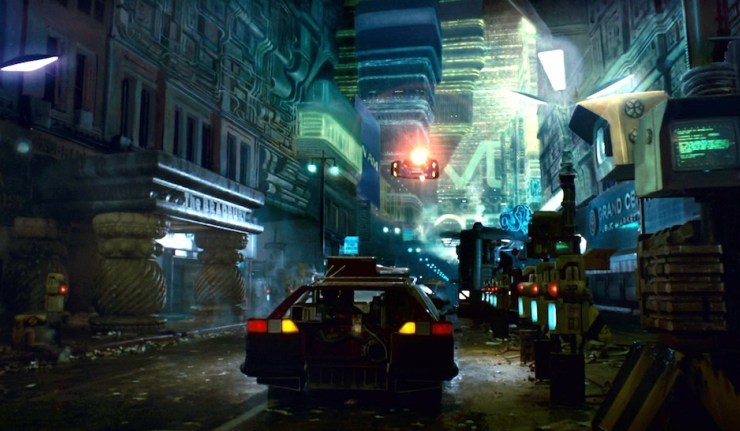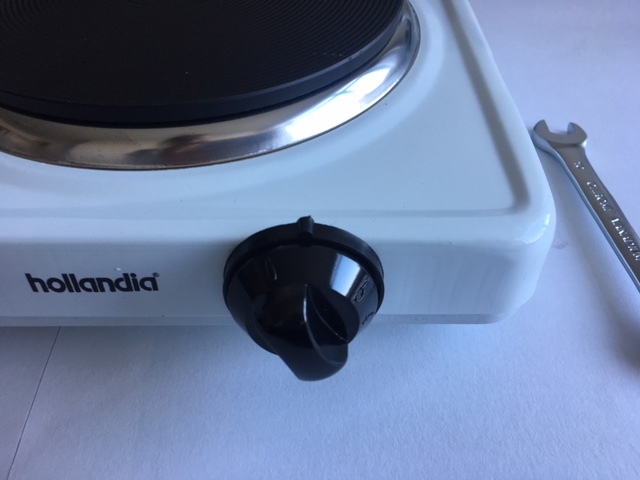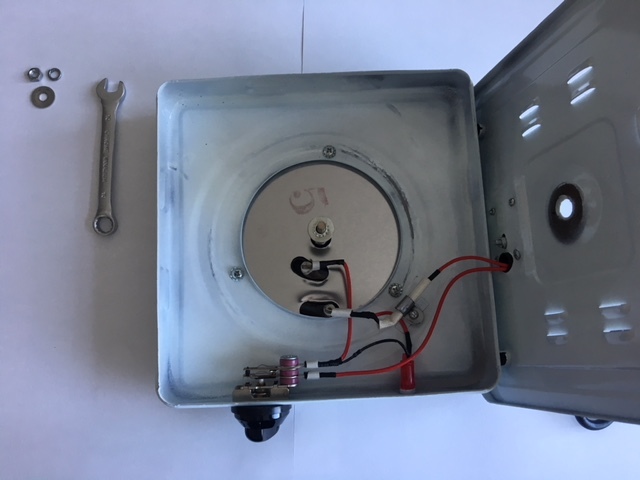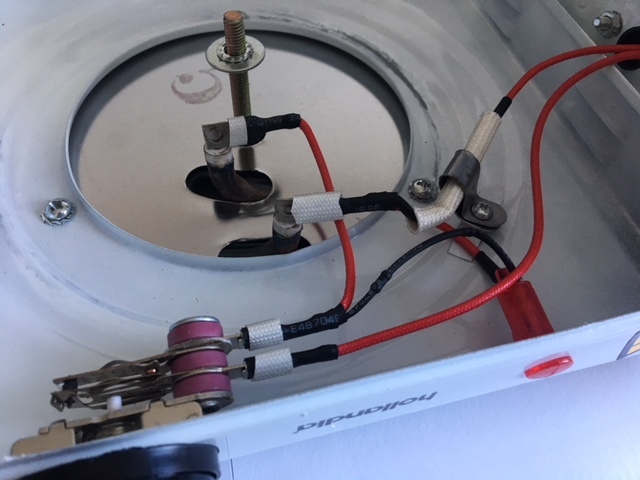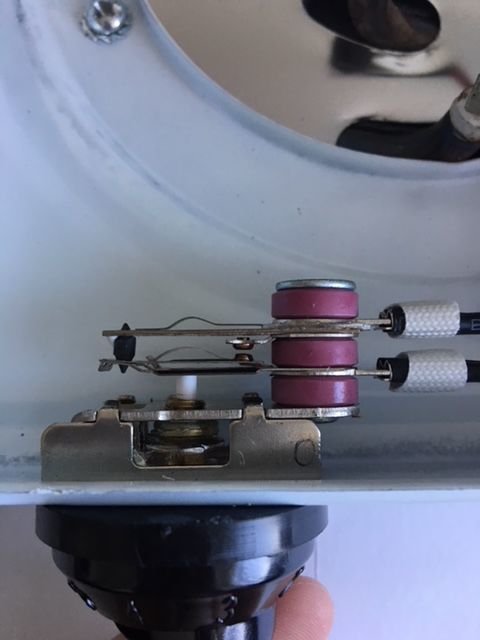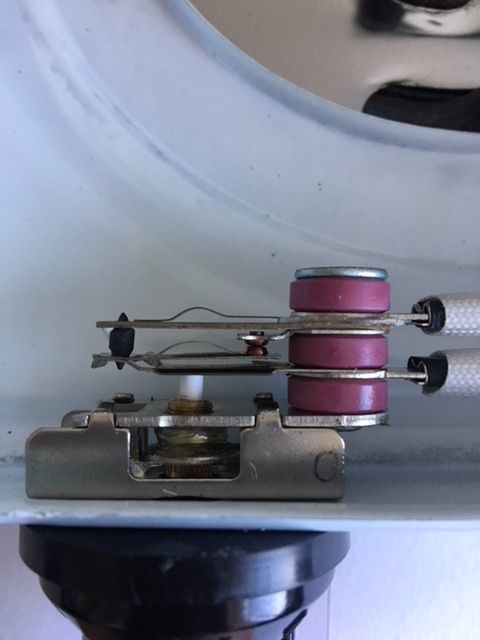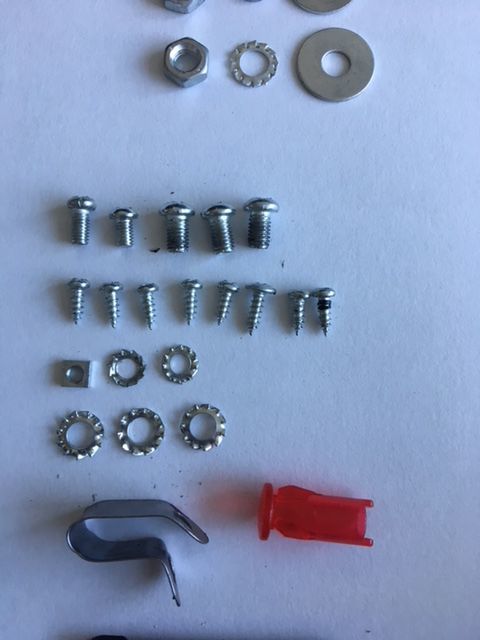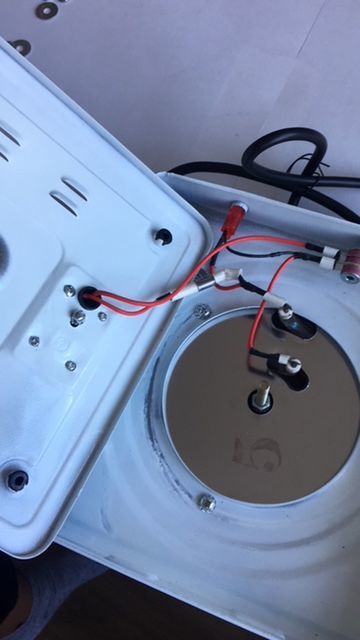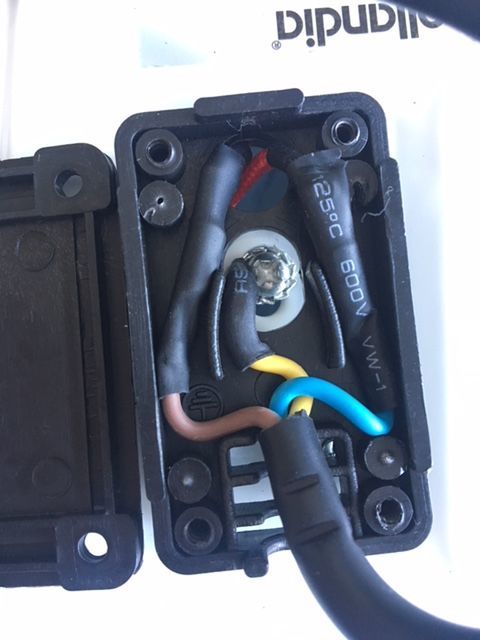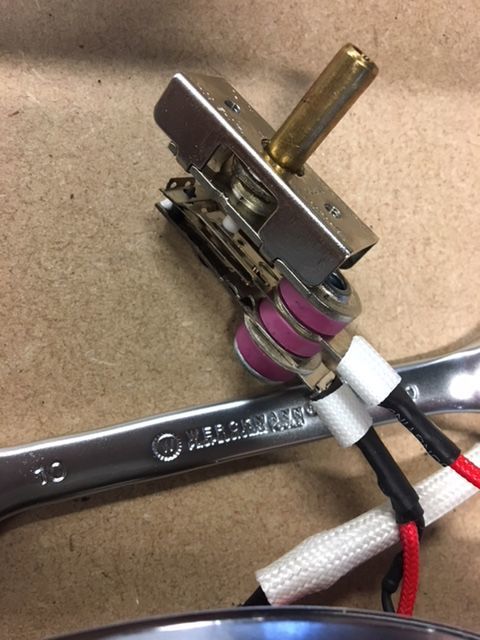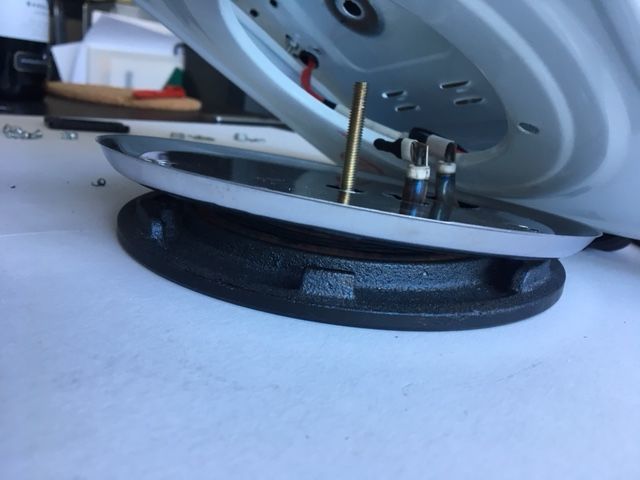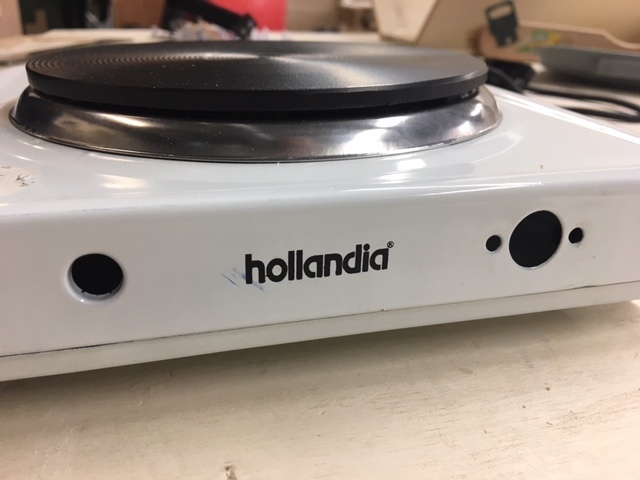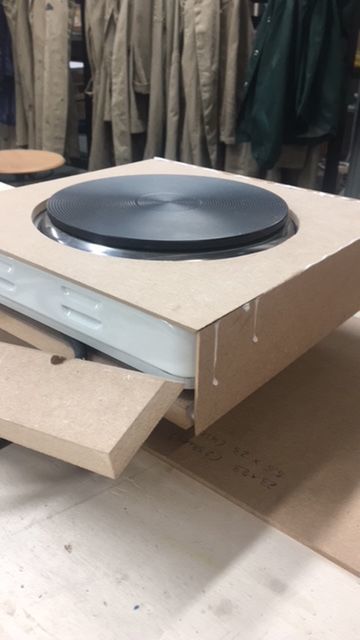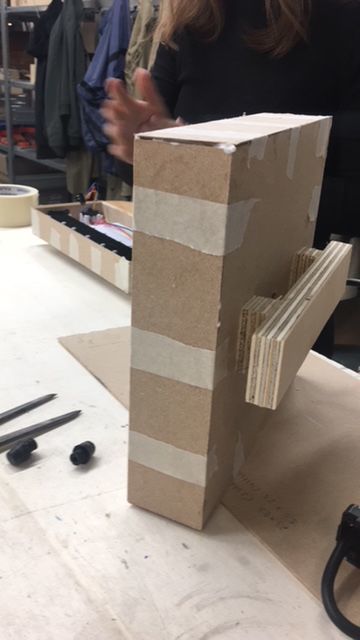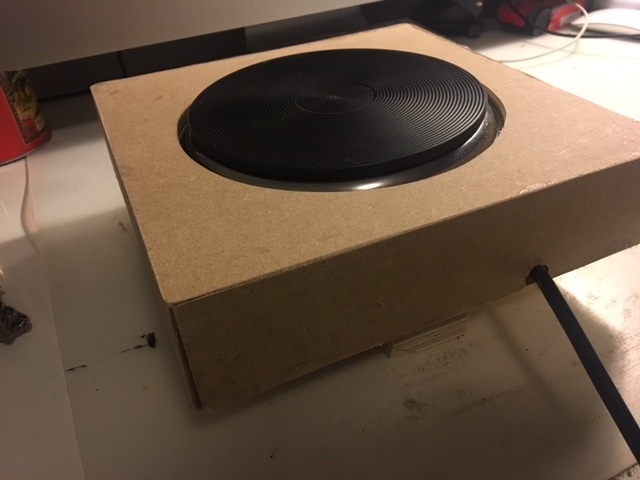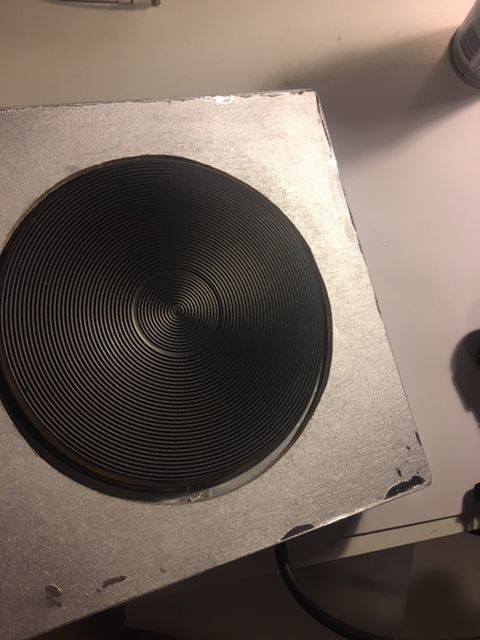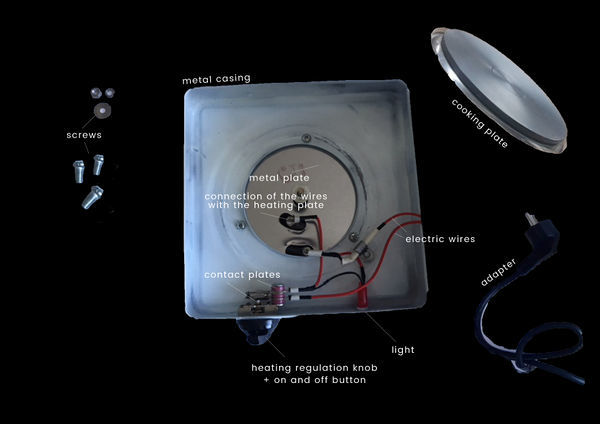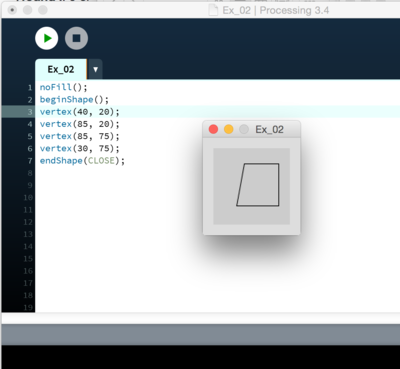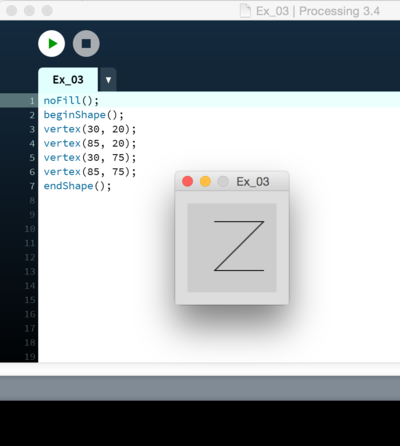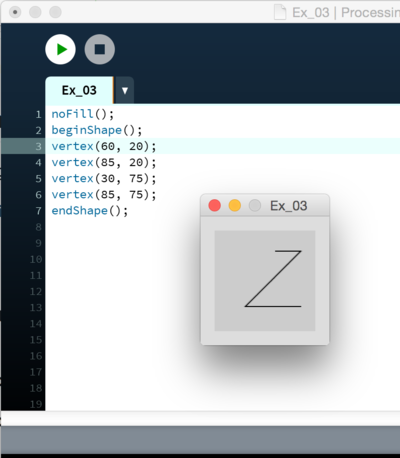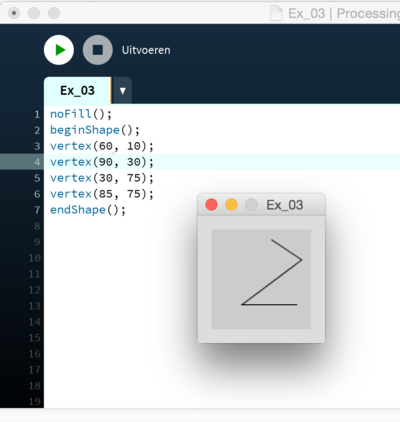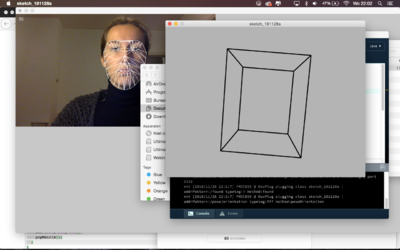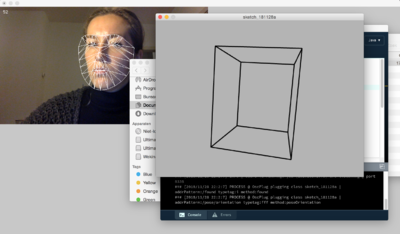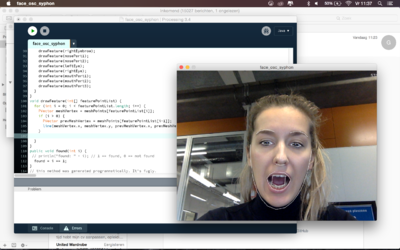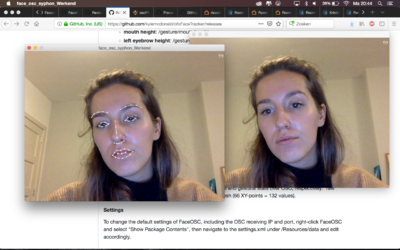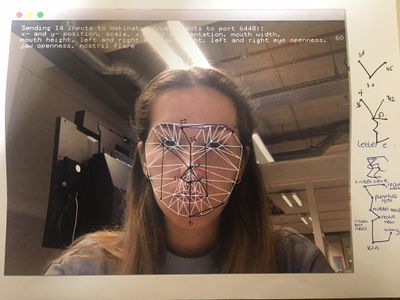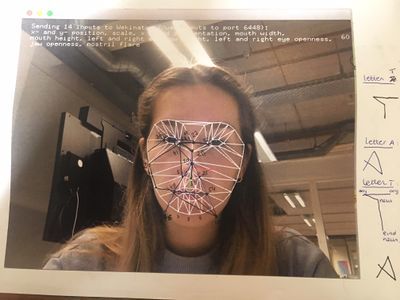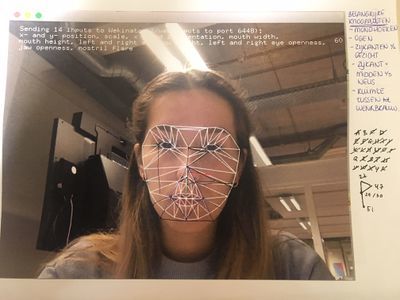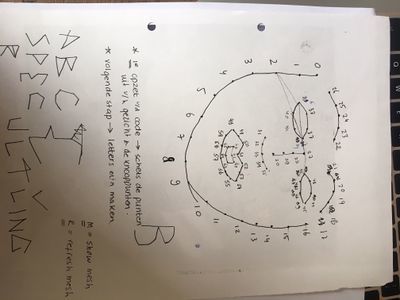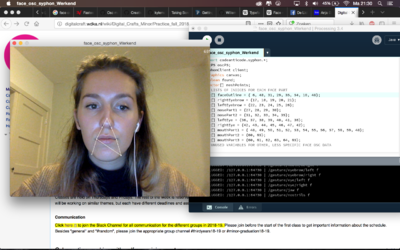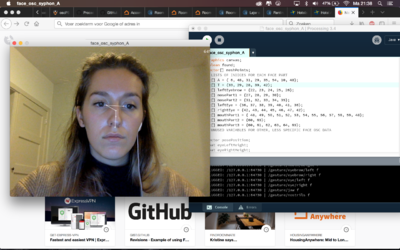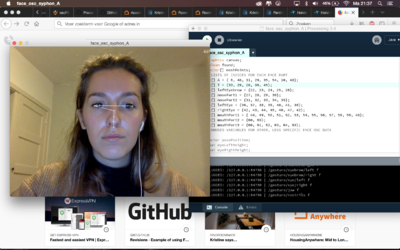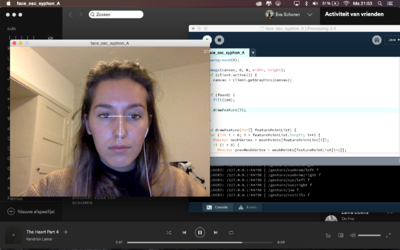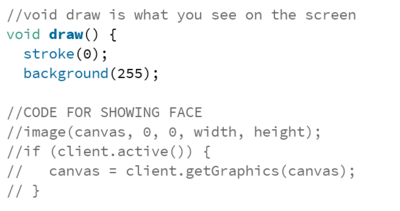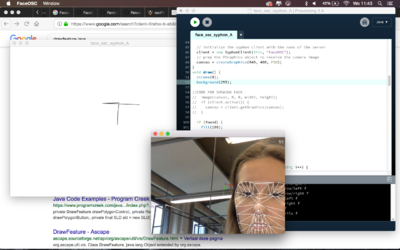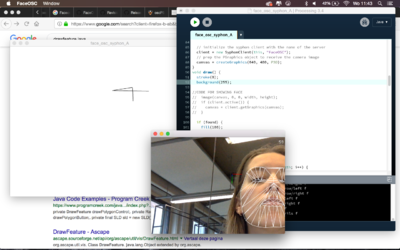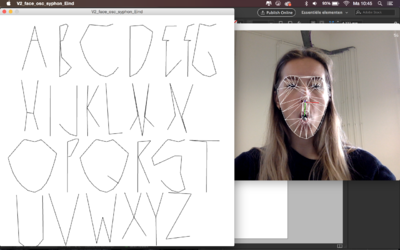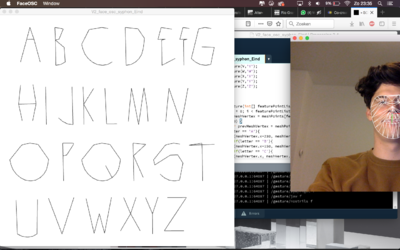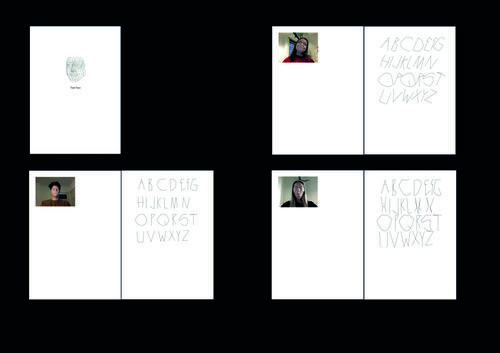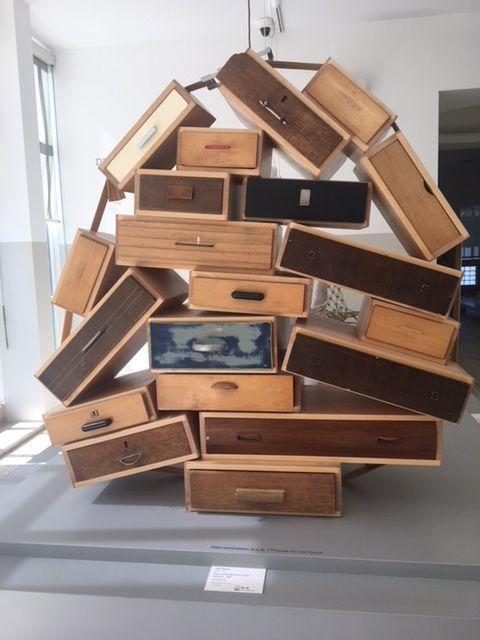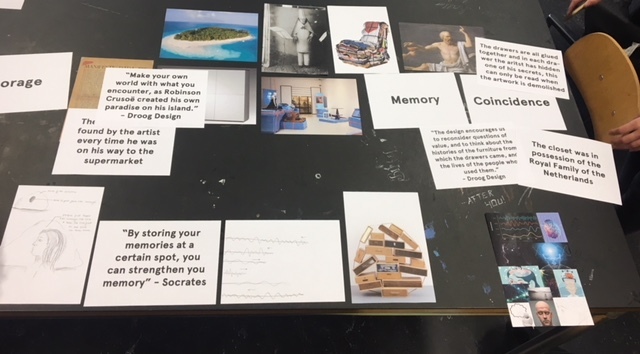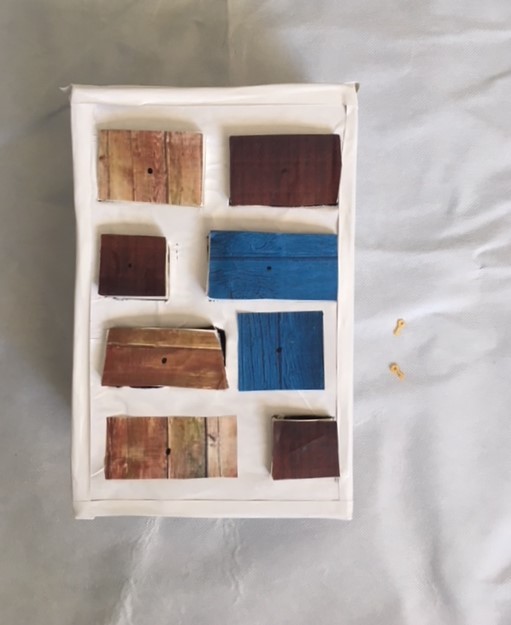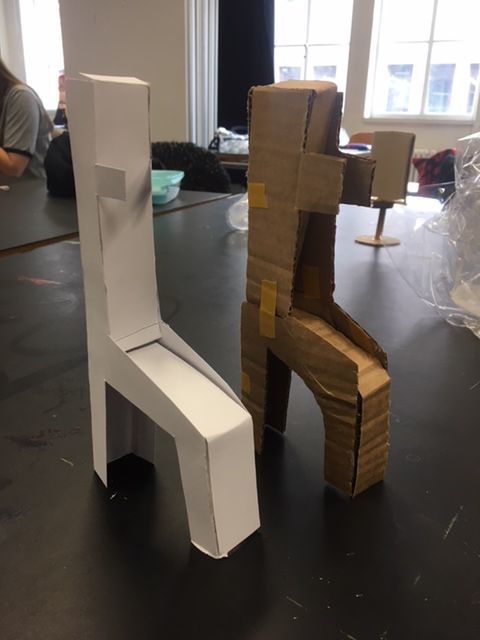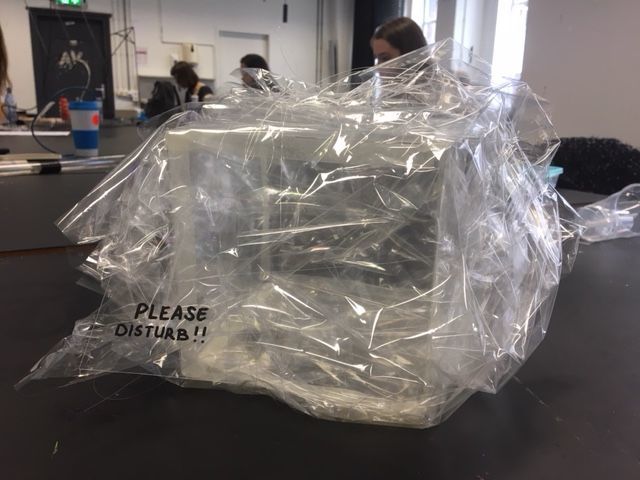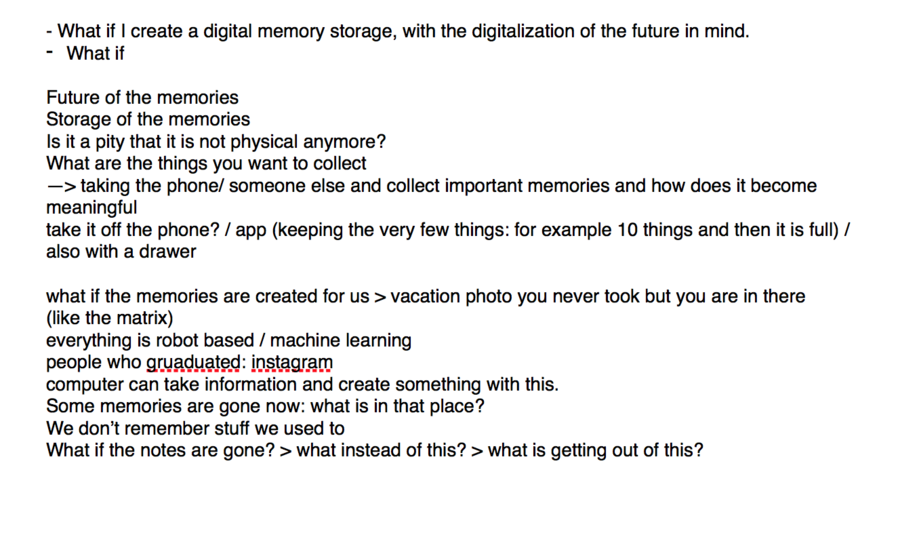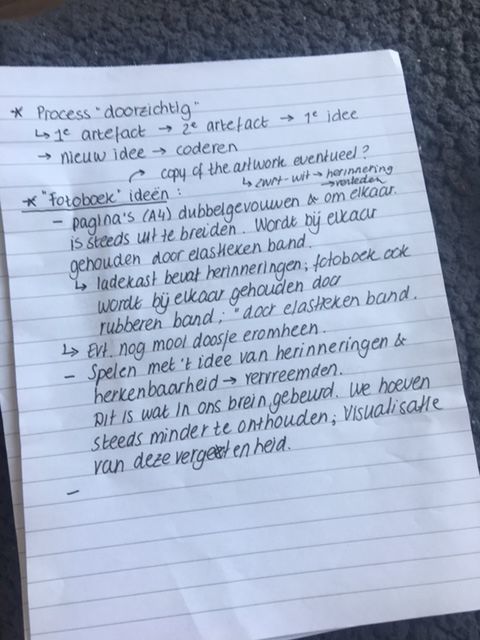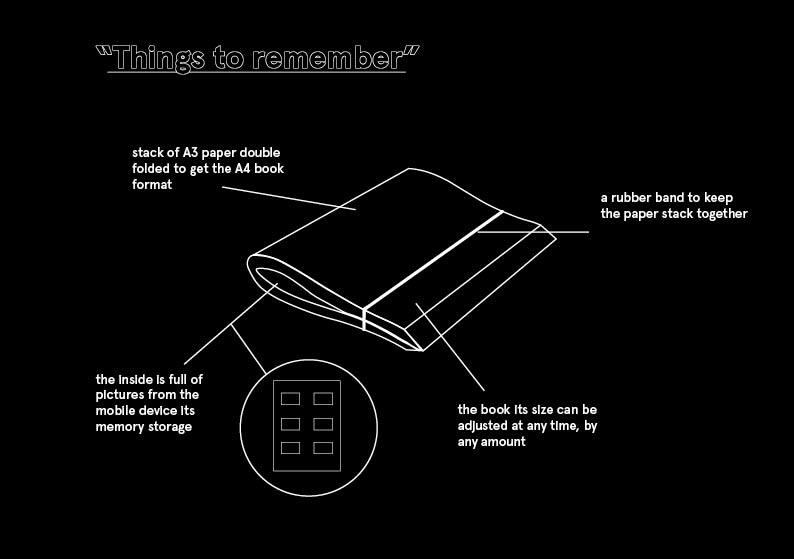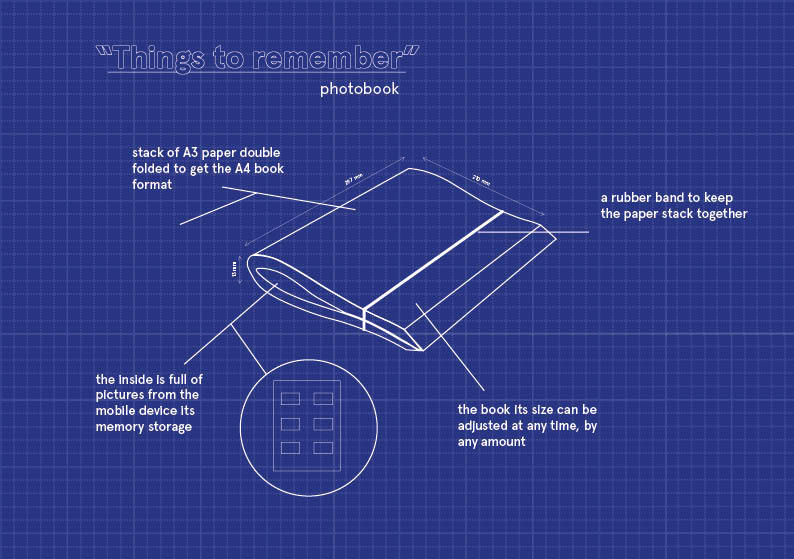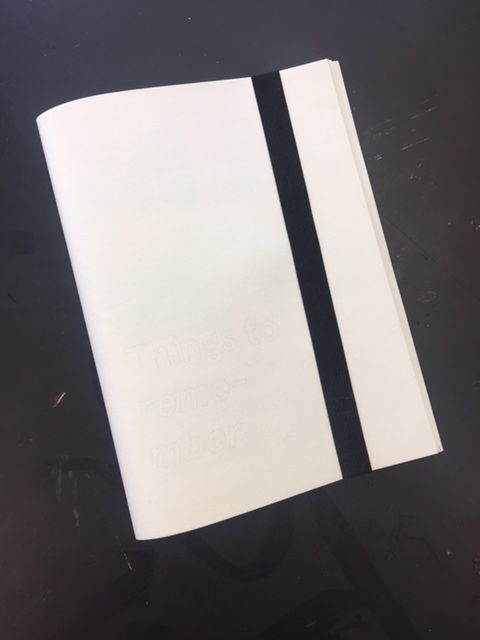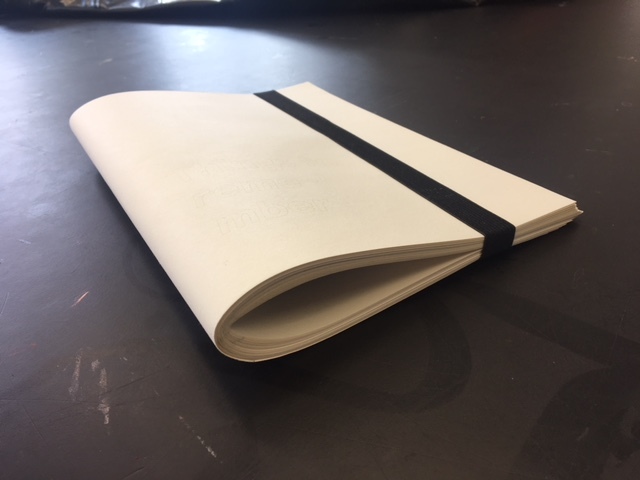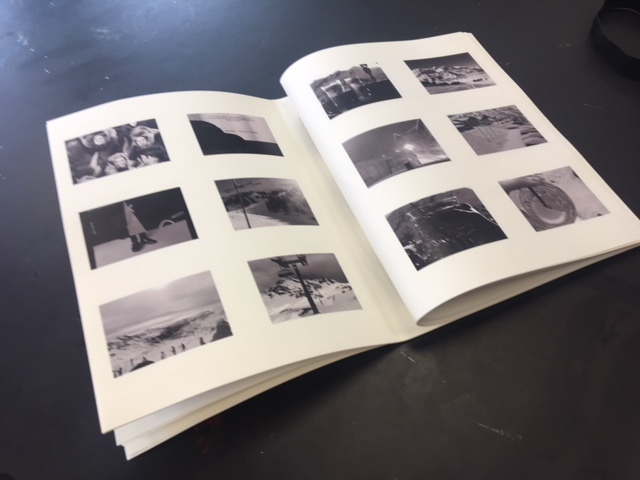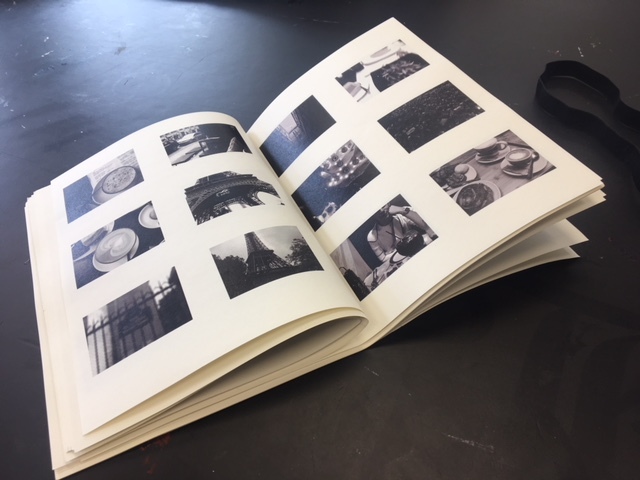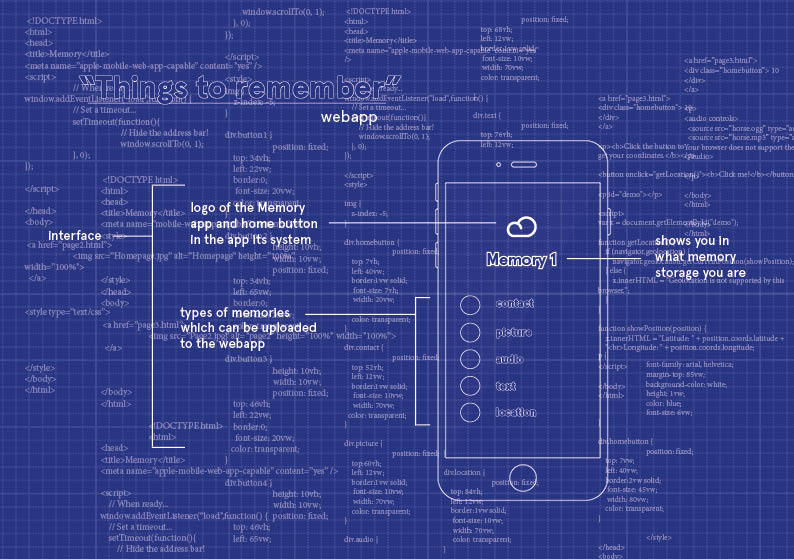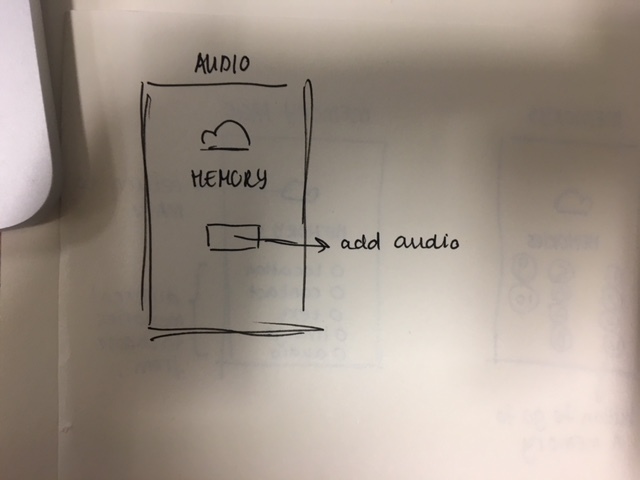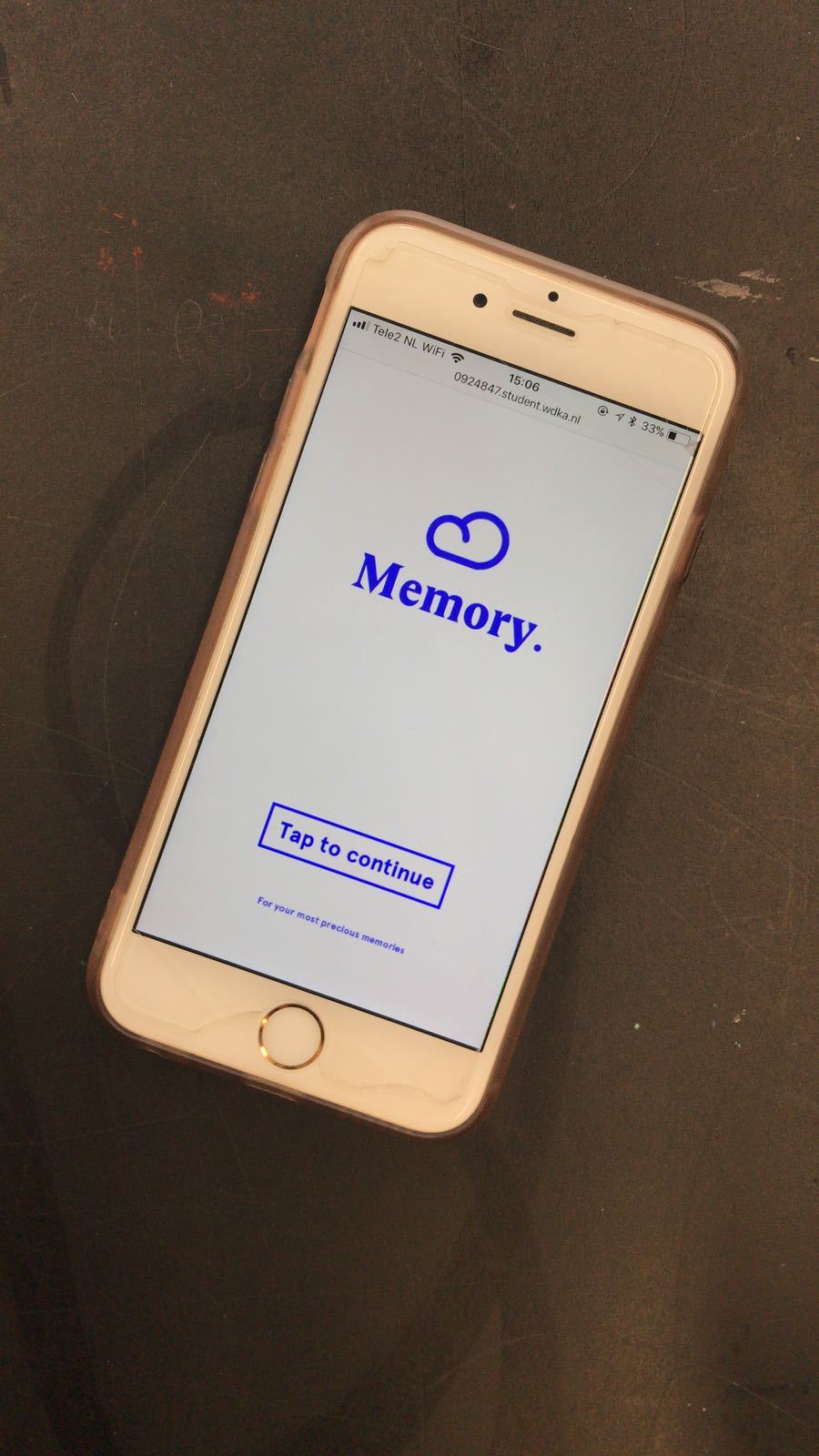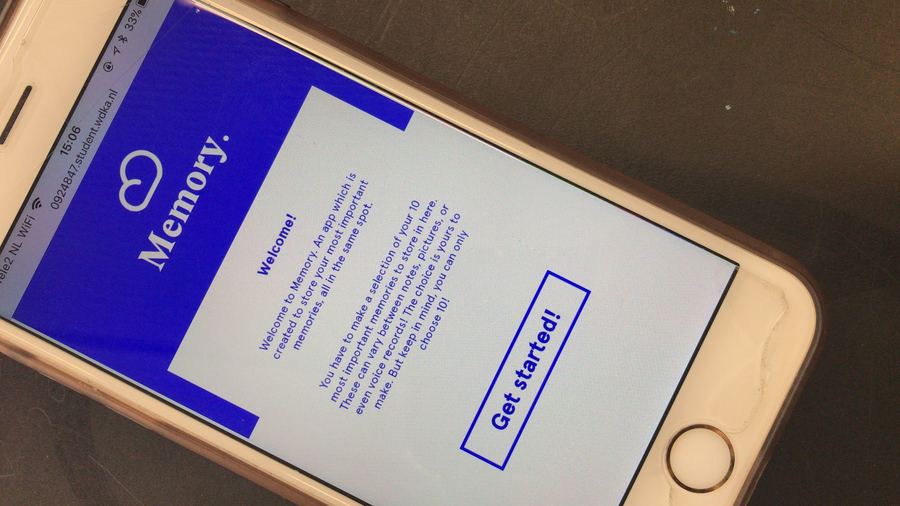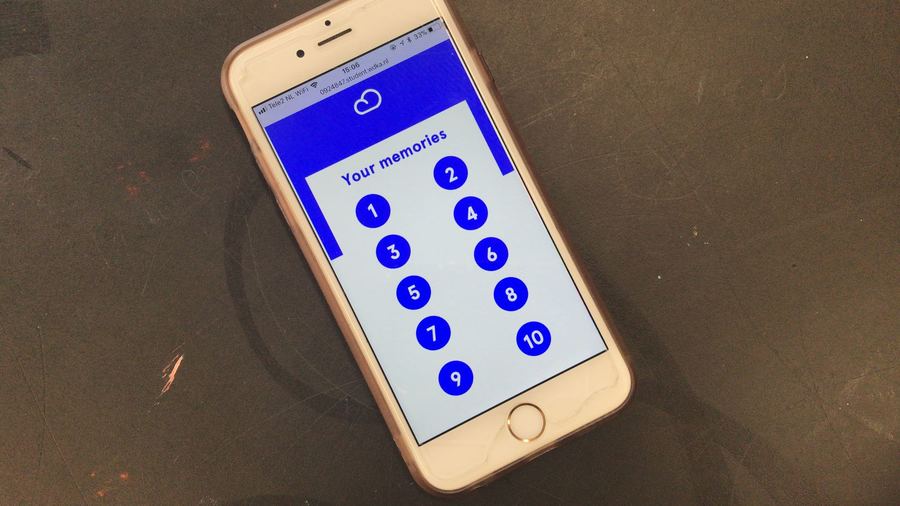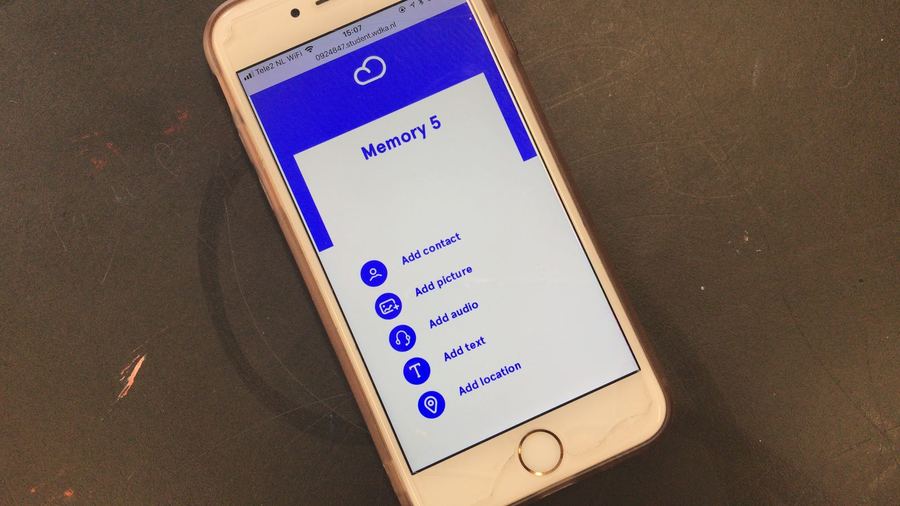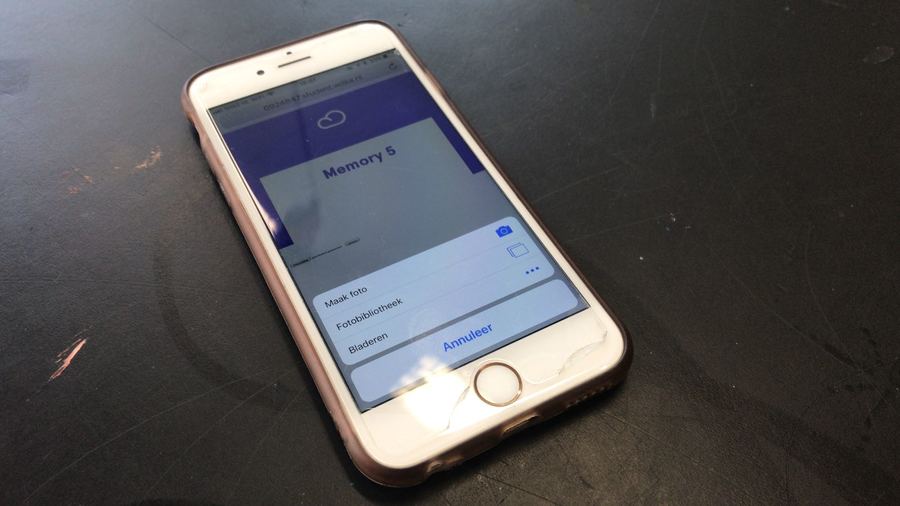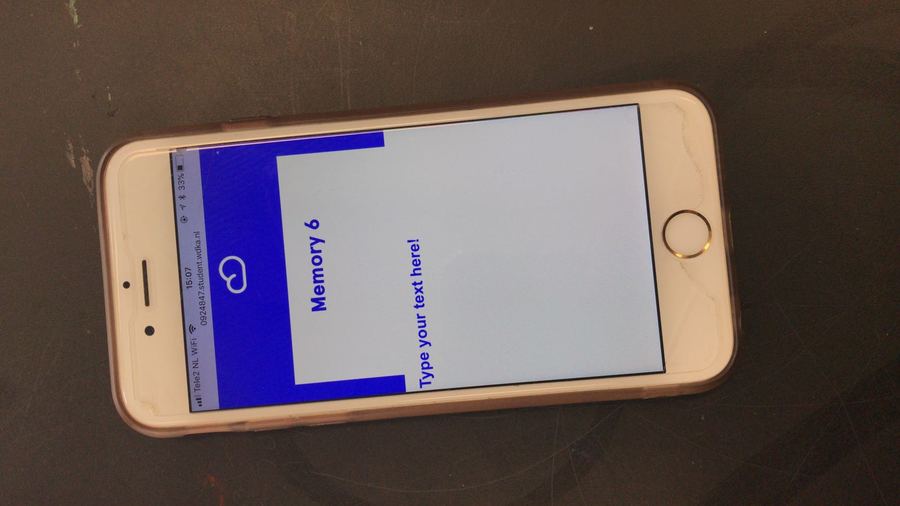Difference between revisions of "User:Evaschoren"
Evaschoren (talk | contribs) |
Evaschoren (talk | contribs) |
||
| (46 intermediate revisions by the same user not shown) | |||
| Line 37: | Line 37: | ||
'''Concept'''<br> | '''Concept'''<br> | ||
With our eye on the future, we see that nature becomes more and more in danger because of the climate change. With this in mind we started the project. Our main focus was to see how we could create a prototype for the future nature. | With our eye on the future, we see that nature becomes more and more in danger because of the climate change. With this in mind we started the project. Our main focus was to see how we could create a prototype for the future nature. | ||
| − | After several sketches we came up with the Future Window. It is a window which shows you nature, like it is now. With the idea in mind that there won't be any nature anymore in the future, and the screen becomes precious in a way. | + | After several sketches we came up with the Future Window. It is a window which shows you nature, like it is now. With the idea in mind that there won't be any nature anymore in the future, and the screen becomes precious in a way. By the nature being gone, the emotional functional is also gone. |
| + | [[File:IMG_5760-1.JPG]] | ||
| + | [[File:IMG_5761-1.JPG]] | ||
| + | |||
'''Inspiration/references''' | '''Inspiration/references''' | ||
| + | *Christine Odlund | ||
*Blade Runner movie: sci-fi movie where there doesn't excist any nature anymore. | *Blade Runner movie: sci-fi movie where there doesn't excist any nature anymore. | ||
| − | [[File:Secret-Cinema-2.jpg| | + | *Reconnecting Culture, Technology and Nature (From Society to Heterogeneity) Book by Mike Mi |
| + | chael | ||
| + | *The Hunger Games: Where there is a big display and a person can choose a view with a remote. | ||
| + | [[File:Secret-Cinema-2.jpg]] | ||
| + | |||
| + | |||
| + | '''Natural Window''' | ||
| + | We have made an installation which shows nature. There is also sound with it, so it realy becomes an experience. For now it is only a beemer on a foam piece which is almost a kind of portal in which you see nature, but eventually we want to develop it into a real screen. The screen will have all kinds of sensors in it. One of them is a movement senor, which will make the screen turn on when you are close to it. We also wanted to make an algorythm connected to it, which will show you the nature according to the weather outside. | ||
| + | |||
| + | |||
| + | '''Feedback''' | ||
| + | How can sensors play a role in this? | ||
| + | |||
| + | ===Project 3=== | ||
| + | '''Critical Making''' | ||
| + | |||
| + | '''Device''' | ||
| + | For this assignment I have chosen a cooker. I have chosen this device because it is something we all use on a daily base. Especially students use this kind of cooker so I thought it might be interesting to have a look into it and see how it works.<br> | ||
| + | [[File:IMG_5703.JPG]]<br> | ||
| + | [[File:IMG_5704.JPG]]<br><br> | ||
| + | |||
| + | '''Taking the device apart'''<br> | ||
| + | [[File:IMG_5705.JPG]]<br> | ||
| + | [[File:IMG 5706.JPG]]<br> | ||
| + | [[File:IMG_5716.JPG]]<br> | ||
| + | [[File:IMG_5707.JPG]]<br> | ||
| + | [[File:IMG_5708.JPG]]<br> | ||
| + | [[File:IMG_5722.JPG]]<br> | ||
| + | [[File:172AA497-A5D5-44D2-9853-F304532F7E34.JPG]]<br> | ||
| + | [[File:IMG_5722.JPG]]<br> | ||
| + | [[File:IMG_5711.JPG]]<br> | ||
| + | [[File:IMG_5732.JPG]]<br> | ||
| + | [[File:IMG_5712.JPG]]<br><br> | ||
| + | |||
| + | '''Creating something new for it'''<br> | ||
| + | [[File:IMG_5738.JPG]]<br> | ||
| + | [[File:IMG_5733.JPG]]<br> | ||
| + | [[File:A2F89A07-14F0-4EC0-9519-425FCA55A3D3.JPG]]<br> | ||
| + | [[File:F79AF832-2FBA-45EA-A90E-A5E3F765250A.JPG]]<br> | ||
| + | [[File:IMG_5751.JPG]]<br> | ||
| + | [[File:IMG_5757.JPG]]<br><br> | ||
| + | |||
| + | '''Feedback''' | ||
| + | Try to see how I can develop it further in the future. Maybe it can become a type of multifunctional 'ironical' machine. Which can cook, iron, toast, etc. | ||
| + | Another thing to look into is to see how the device will look. If I can built something around it which makes it more into an ironmachine, like the point-shape. Or maybe put something on top of the cookplate which will be an ironplate. | ||
| + | |||
| + | A deeper layer on top of the ironical iron could be a movement sensor which will make it turn on when you are close to it / using it. And when not using it / close to it, it will turn off again, even if it is still into the socket. | ||
| + | |||
| + | ===Project 4=== | ||
| + | Mapping | ||
| + | |||
| + | [[File:Mapping_DC_project4.jpg|600px]] | ||
| + | |||
| + | ===Project 5=== | ||
| + | '''TypeFace''' | ||
| + | |||
| + | |||
| + | '''Project''' | ||
| + | |||
| + | TypeFace is a project in which I want to emphasize the characteristics of typography. It is something personal and they all have their own unique details. The human face shares the same conditions. We all have specific characteristics which makes us who we are. | ||
| + | |||
| + | |||
| + | '''Inspiration / references:''' | ||
| + | |||
| + | * The workshop about programming - processing - java with Javier inspired me to work more with this medium. | ||
| + | |||
| + | |||
| + | * https://processing.org/, https://processing.org/tutorials/, https://processing.org/examples/, https://processing.org/examples/pointslines.html, https://processing.org/reference/ - the basics for using java with processing | ||
| + | |||
| + | |||
| + | * https://www.youtube.com/watch?v=zmE-2j6VyRg - inspiration video of the combination of FaceOSC and Java and how it can be used. In this case it has been used as a tool to create an interactive face drawing. | ||
| + | |||
| + | |||
| + | * http://stoj.io/ - a design studio in Copenhagen which does all kinds of creative coding. They show a wide variety of what is possible in the creative field with coding which encouraged me to think out of the box. | ||
| + | |||
| + | |||
| + | * https://www.field.io/project/type-reinvented/ - Digitalized typography. This project gave me some new insight in the possibilities of digital typogaphy and inspired me in this way too. It is an interactive typeface qhich questions todays static fonts. The project plays with the combination of typefaces and digital aspects (like interactivity, data input and generative design). I found this questionaire of static design very interesting and accurate in todays graphic design. | ||
| + | |||
| + | |||
| + | * https://andreasrefsgaard.dk/ - A danish designer who a lot with creative coding. Again here I became inspired by all the possibilities in coding and the combination with design / the creative field. | ||
| + | |||
| + | |||
| + | * Leon Butler - https://atribalvision.com/interviews/019-leon-butler (interview with Butler about his work). He did a project about generative type. About his project: https://www.academia.edu/29045364/Generative_Typography_Design. | ||
| + | |||
| + | |||
| + | * Facial recognision in surveillance cameras - the technology behind this inspired me. It is always in the news in a negative way. Especially these days when privacy is more important than ever with the new laws. This technology is everywhere, but is almost always kept private. What if I can turn this into something public? | ||
| + | |||
| + | |||
| + | * Mood to font: https://www.youtube.com/watch?v=jyUrHr0x6wM - another project with generative type which responds to your facial emotions. The same programs are being used as I have been using during this project, and also the combination with typography, but than in another way: with emotions. | ||
| + | |||
| + | |||
| + | * Mark Shepard - Hertzian Rain: Getting video signals from the camera which were situated on a square. These signals were being projected on the same square. The public - private part played an important role here. He made private technology visible. | ||
| + | |||
| + | |||
| + | * BNO IMG LAB - On Type lecture: Gave me more insight in typography itself. Fascination ofr typography grew further here. | ||
| + | |||
| + | |||
| + | * BNO IMG LAB - 3D Types lecture: Gave me a whole new perspective of digitalizing typography. Type was being made with mathematical programs and functions. Inspired me to look beyong the known side of typography. | ||
| + | |||
| + | * https://www.dailymail.co.uk/news/article-2795014/scientists-identified-nine-distinct-face-shapes-five-new-groups-traditional-oval-round-heart-square.html | ||
| + | |||
| + | |||
| + | *https://www.researchgate.net/figure/Illustration-of-the-highly-distinctive-manipulations-to-facial-areas-on-one-of-the_fig1_221690016 | ||
| + | |||
| + | |||
| + | * https://www.ncbi.nlm.nih.gov/pubmed/16102236 | ||
| + | |||
| + | |||
| + | * https://www.spectrumnews.org/news/face-recognition-is-distinct-genetic-skill-studies-find/ | ||
| + | |||
| + | |||
| + | '''Type Face''' | ||
| + | |||
| + | First idea was to make a generative typeface. A letter which is based on your facial structures and becomes very personal because of this. Everyone has another structure in their face, although some of it is hard to distinguish. It is in the details. Typefaces show the same characteristics. Their base is the same, whereas their looks are being determined through details. They make them who they are, just as we humans all share the same base in our face (nose, mouth, eyes, etc.) but the details in space and size make us who we are. | ||
| + | |||
| + | First feedback: Determine what appears? In this case I decided that I will first create one letter. If that already succeeds, I can create more. To create the whole alfabet was a bit too ambitious to start with because I did not have any knowledge about coding and java, only the workshop with Javier. A tip from Shailoh was to experiment with processing. | ||
| + | More feedback was how can a face be interpreted and to make a planning. Is there also something beyond? Some arbitrary interaction? People are always looking for something beyond it. | ||
| + | |||
| + | After the feedback talk I decided to ask for some help. Whereas I did not know where even to start in the big hole of programming. I went to Britt. She works at the interaction station. Here I explained her my idea. She gave me the tip to try Wekinator, a program which makes it possible to train your computer, and use it in combination with FaceOSC. We also came up with some new ideas, like using emotions instead of facial structures. On the github of the interaction station is a lot of information available when it comes to wekinator and FaceOSC: https://github.com/mywdka (For questions: Javier knows more about the github). | ||
| + | |||
| + | I thought to work with Kinect, because I heard from several people this could be easily hacked and coded, but when digging into it, I soon discoverd that Kinect only sees your face as being a shape and it can not see any lines or distances between the elements in your face. That is also why I went further with only FaceOSC, Java and Wekinator. With your laptop you can scan different faces through your webcam in the Wekinator programm. You can connect the Wekinator with FaceOSC. This programm connects to an available webcam on your laptop or computer. It tracks your face and streams the tracking information in realtime over OSC for quickly prototyping in various environments or controlling OSC applications. So your face is being scanned and eventually based on these structures, I want a letter to be being plotted in Java. | ||
| + | |||
| + | |||
| + | Planning: | ||
| + | |||
| + | Step 1: Wekinator and processing needed | ||
| + | |||
| + | Step 2: Link Processing and Wekinator with eachother. Start with 3 expressions to train. | ||
| + | |||
| + | Step 3: Start recording in Wekinator. You have to completely leave the space and come back in the camera again. | ||
| + | |||
| + | |||
| + | '''Important finding:''' | ||
| + | |||
| + | After some try outs and experimenting I came to the conclusion I did not need to use Wekinator at all. I could plot lines between the nodes in FaceOSC with Processing. These nodes are present in everyones face, but on different spots. The computer does not need to be trained at all. | ||
| + | |||
| + | |||
| + | This finding changed my way of working. I saw that I understood the programm already a bit better and I understood what I needed to programm to come to the desired outcome. I went to experiment with plotting lines in Processing, because this would be the very base of my code. | ||
| + | |||
| + | [[File:Line1.png|400px]] | ||
| + | |||
| + | [[File:Line2.png|400px]] | ||
| + | |||
| + | [[File:Line3.png|400px]] | ||
| + | |||
| + | [[File:Line4.png|400px]] | ||
| + | |||
| + | After these tryouts, I understood how lines were being plotted in Java. I decided to take it a step further by making the lines interactive and link it to FaceOSC and Processing. This took a while to understand so I asked for some help again in the Interaction Station. It occured that I needed another program: Syphon. Syphon is an OSX framework to share frames between applications. In this case: Processing and FaceOSC. When these were connected to eachother I could create interactive lines. These lines were plotted on several points which connected to the movement of the face: | ||
| + | |||
| + | [[File:Line5.png|400px]] | ||
| + | |||
| + | [[File:Schermafbeelding_2018-11-28_om_22.02.18.png|400px]] | ||
| + | |||
| + | When I understood how this worked in coding, I took it again a step further and tried to create a shape which resembled the face. This was pretty hard and time-consuming to find out on my own, so I went on the internet to browse for something familiar. This is where I found an existing code which showed the faceshape and the nodes which were being seen by FaceOSC in the camera. This facial mapping showed the data in lines which are being formed by your face its shape. The existing code was found on: https://gist.github.com/atduskgreg/3929016. I edited this code so I only had the parts which were important for my project: the nodes of the face. Because these were already given in this code I could easily determine between which lines I had to plot the lines in Java. But first I did some try outs with the face mesh itself, for example by adding bullets on the nodes and removing them and play with the position of the nodes: | ||
| + | |||
| + | |||
| + | [[File:Fullface.png|400px]] | ||
| + | |||
| + | [[File:Fullface2.png|400px]] | ||
| + | |||
| + | [[File:Fullface3.png|400px]] | ||
| + | |||
| + | |||
| + | After this experiment I made a screenshot of the facemesh and printed it out, so I could draw the letters by hand to see between which nodes I could make which letter. I started with a simple A and tried some things out. The other letters are also sketched eventually in these drawings: | ||
| + | |||
| + | [[File:Fullface4.JPG|400px]] | ||
| + | |||
| + | [[File:Fullface5.JPG|400px]] | ||
| + | |||
| + | [[File:Fullface6.JPG|400px]] | ||
| + | |||
| + | [[File:Fullface7.JPG|400px]] | ||
| + | |||
| + | [[File:A.png|400px]] | ||
| + | |||
| + | |||
| + | When I found out how to plot a letter, in this case the A, I went further and tried to make other letters. For now I had only sorted out how I could show a letter on a face. Underneath are 3 different kinds of T based on the facemesh displayed: | ||
| + | |||
| + | [[File:T1.png|400px]] | ||
| + | |||
| + | [[File:T2.png|400px]] | ||
| + | |||
| + | [[File:T3.png|400px]] | ||
| + | |||
| + | |||
| + | Now I knew how to plot letters. My next challenge was to make only the letter visible and hide the livestream of the face which you saw on the background. I did this with the following code: | ||
| + | |||
| + | [[File:Codeface.png|400px]] | ||
| + | |||
| + | [[File:T4.png|400px]] | ||
| + | |||
| + | [[File:T5.png|400px]] | ||
| + | |||
| + | |||
| + | Eventually I made all the letters of the alfabet, but they were all displayed one by one. I could only draw one letter at a time or more letters at the same time but then they were displayed on top of eachother. So, the final thing I had to figure out was how I could display all the letters next to eachother and underneath eachother. For this part I figured out it was quite easy to solve the problem. It only needed an if-loop which made it possible to display all the letters seperately based on the given x and y coordinates. | ||
| + | |||
| + | |||
| + | [[File:ifloop.png|400px]] | ||
| + | |||
| + | [[File:all.png|400px]] | ||
| + | |||
| + | [[File:all2.png|400px]] | ||
| + | |||
| + | |||
| + | In the future I definately want to work on this project even more and maybe even add more features to it, like voice features which for example determine the thickness of the letters. The entire code can be found on my github page and has further explanation above every part what it does: https://gist.github.com/Evaluatie/900dcbf7df33c137623444597fb92494. This project definately inspired me to do more with the combination of graphic design in a digital context. | ||
| + | |||
| + | |||
| + | Eventually I have created a program which builts type based on your facial structures. We are being exposed to this technology every day: on the streets, in our private life. On a daily base, our faces are being detected, recognized, flagged, filtered, swiped, targeted, and possibly even criminalized. New technology can be intimidating. That is also why people tend to be afraid of it. Assumptions are made and the fear of invasion of our privacy and personal lives are growing. These are all negative ideas around the facial recognision. With my project I want to take this technology and put it in a new, positive context and show the people it is actually something very beautiful and can be used for other things too. Type Face puts the technology in a new light by using it for this new purpose. The face scan technology is being reassigned and used for making type based on your phonetype. The key points in your face are the fundamentals for the typography. Your own personal type can be genrated in just a few seconds. It has its own details and characteristics which makes every single typeface unique. | ||
| + | |||
| + | |||
| + | '''Final Outcome''' | ||
| + | |||
| + | These are screenshots of the final outcome of the project and people testing it: | ||
| + | |||
| + | [[File:Gezicht.jpg|500px]] | ||
| + | |||
| + | ==Research Document== | ||
| + | |||
| + | [[Media: V2_Research_docu.pdf]] | ||
| + | |||
| + | ==Position Paper== | ||
| + | |||
| + | My discipline is Graphic Design. Within this discipline I try to explore the boundaries and work with all kinds of different techniques. Connection analogue and digital techniques with each other to come to new insights and give new dimensions. Not only working with different techniques is what I find interesting, also taking these to a new level and put them in new perspectives and use them in another way then originally meant. Another important part of my approach to work step by step, and not take too much on my plate at a time, so the process will stay clear and organized for myself. Documenting this process is an important part of this too. To conclude, my craft is to use and combine different technologies within my graphic design discipline and seek for new insights and ways of usage of these technologies and techniques. | ||
| + | |||
| + | |||
| + | My craft consists of different media and tools. This is because my vision is to become a multidisciplinary designer eventually and not limit myself to certain media and tools. While working with processing I found out I was very impressed with this, because of all the possibilities with this technology. This was a breakthrough for me because before working in Digital Craft, I tended to stay in my comfort zone. I was introduced to the technology of Java and got inspired by it and eventually dived into it by starting to use it in my works, like I did in Type Face. Also programs like FaceOSC, Syphon and Wekinator play a role in my craft. These are all media which make it possible to interact with the created work. A connection between men and machine is made and by working together and reaction on each other, there will be an outcome. In Type Face this outcome was the typeface which was being produced as a result on the facial gestures of a human being in front of the camera. This person can change the typeface by changing the gestures on their face. | ||
| + | |||
| + | |||
| + | The borders of the practice are almost unlimited. This is because a lot is possible, especially by using existing technologies in new contexts and for new purposes. By doing this I have broadened the possibilities of the existing technologies and add complete new possibilities for them. By doing this, their borders also blur. In this case with Type Face, the new media technology of using FaceOSC and Java for creating typefaces has risen. Where creating fonts has always been something time-consuming, can now be done in a much shorter timeframe. The basic letter shapes are there, but you can change the details like height en width of the letters with your facial structure. The future of this field can be even more expanded and there is plenty of room for improvement in this project field. For example adding new technologies like voice recognition to it, which will allow you to create a bold or a very thin letter. Also the letters itself can be improved more and can be shaped even more specific to your face, which will result in a more personal typeface. In short: in the future the technology will be more specific and further developed, and can even contain more options and tools in shaping your own typeface. Phenotype of people becomes an important aspect for type designers. This gives rise to new questions, like what kind of facial structure gives the ‘perfect’ typeface? Are there people being hired in the future to model in the creation of a typeface? To conclude: a lot of new possibilities are still open to explore in the future for this project. | ||
| + | |||
| + | |||
| + | Back in the days, typography was something which was made by hand. Type designers worked on a font for a long time before it was done. But the outcome was something static. Nowadays we live in a dynamic and digital era, where the idea of a static font does not match our society. We as human being are everything besides static. A typeface design should be emotional and responsive, but still powerful in its communication. Besides this, we also seek for connection and personality in a society in which almost everything is taken over by technology. Type Face gives provides in all of this. Men and technique together create a typeface, based on the phenotype and movements of the person. It is all about interaction between the two. Eventually, the typeface which has been created is something personal, because its origins is the phenotype of the creator of it. Leon Butler is a good example of a contemporary practitioner. He has done a project with generative typefaces and states: “Generative typography is a relatively new area of type design one that disrupts the norms and presents a new evolution of the processes that have developed and shed some of the tools defined in the last 30 years and allow it to form an evolution of the process. Within the production of this typeface I wanted to build on what had gone before and define a new aesthetic with a complexity and future narrative that would open the possibilities of type with aversatility to be used as a display type in publishing and branding projects with the ability to generate custom ligatures joined strings of text for titles, headers and logo forms”. Another contemporary practitioner is Mark Shepard. He did a project, called Hertzian Rain, which shows the interaction between men and technology in public. | ||
| + | |||
| + | |||
| + | I find it important that this digitalization of the typography creation takes place and that there is experimentation within it. We live in an era in which everything is being dynamic, so why not try to implement this feature in typography too. Type design is taken out of its original context and put into a new, digital one. This way of applying new contexts to things interests me because it can give fascinating outcomes. This also happened within Type Face. Not only with the typography taken out of its context, but also the used technique of face scan technology. I think it is important that designers look further than the existing context, because it can lead to much more interesting and innovative outcomes then while staying within the comfort zone and looking for new opportunities. | ||
| + | |||
==Year 2== | ==Year 2== | ||
Latest revision as of 20:58, 6 January 2019
Contents
Info
EVA SCHOREN
0924847@hr.nl
Graphic Design
Year 3
Project 1
Critical making
Cards:
Create a dystopic future as a result from memes.
Concept:
Memes are becoming more and more populair these days. You can't surf the internet without being confronted with memes.
Inspiration/research
- Toekomst is hele normale manier van leven
- Mensen hun leven verpest door memes
- Politiek geladen
- Positieve feedback loops
- Gecompliceerde wereld
- memes van memes
- Mierenkolonie (interessant voor de video) (errors)
- The Sapir-Whorf hypothesis
- (arrival film) beïnvloedt denkwijze
- Meme taal
- KEK, fact: kek is LOL in the language use in world of warcraft. https://knowyourmeme.com/memes/kek
- Viceland, https://www.viceland.com/en_us/video/cyberwar-the-great-meme-war/595f95afd978e31b73496a7e
- Kim de groot/ memewars, https://www.facebook.com/likemonalisas/videos/651438051855441/?fb_dtsg_ag=AdyNaPC3X1ewR3FkvnNjaqWy3FCv-FNgb5kH0DzilwnA5Q%3AAdxefLzHUlDKb4Y20c1CmPU0it5-h3wb2Mp7qqfKHrYNlA
- how language changes the way we think, https://www.ted.com/talks/lera_boroditsky_how_language_shapes_the_way_we_think#t-287075
- VPRO DOCU, https://www.vpro.nl/programmas/tegenlicht/kijk/afleveringen/2017-2018/Trollen--Trump---Thierry.html
Future Meme Distopia
About the video: in a digital future we become more familiar with digital language. Even so this will become the language we will use. There will be a point in witch normies become absolute. What will this new/current language do to use as a species? (The Sapir-Whorf hypothesis) The youth of today understand the meme language but our parent do not. It is a generation gab that continuously grows. In the video we made we use the language with story telling. What we found out is that the youth kind of understands what is going on, but elderly totally not.
Movie:
https://www.youtube.com/watch?v=2TM3ReavUcA&feature=youtu.be
Project 2
Cybernetic Prosthetics
Concept
With our eye on the future, we see that nature becomes more and more in danger because of the climate change. With this in mind we started the project. Our main focus was to see how we could create a prototype for the future nature.
After several sketches we came up with the Future Window. It is a window which shows you nature, like it is now. With the idea in mind that there won't be any nature anymore in the future, and the screen becomes precious in a way. By the nature being gone, the emotional functional is also gone.
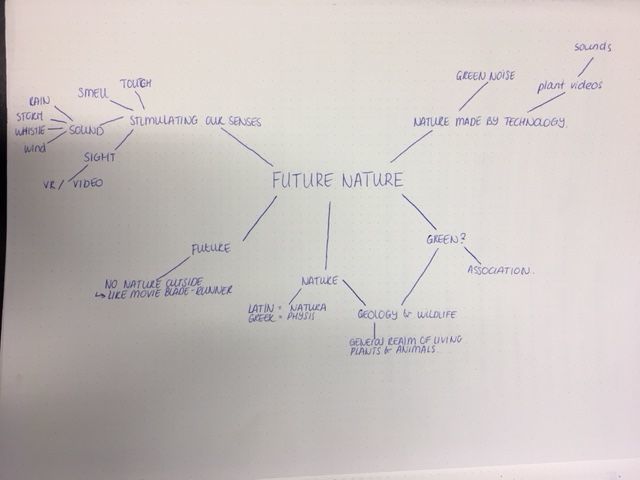
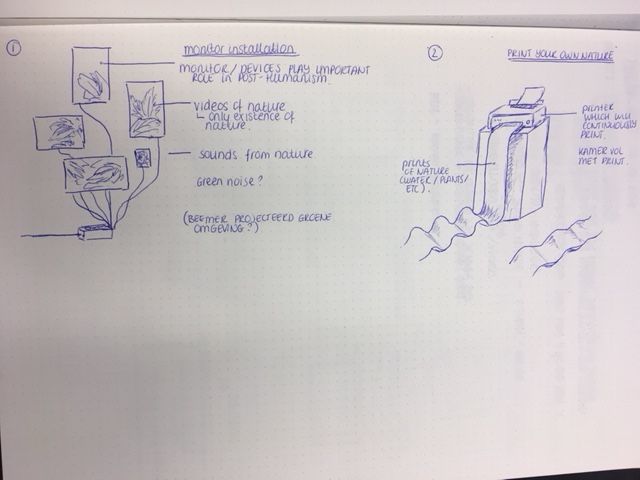
Inspiration/references
- Christine Odlund
- Blade Runner movie: sci-fi movie where there doesn't excist any nature anymore.
- Reconnecting Culture, Technology and Nature (From Society to Heterogeneity) Book by Mike Mi
chael
- The Hunger Games: Where there is a big display and a person can choose a view with a remote.
Natural Window
We have made an installation which shows nature. There is also sound with it, so it realy becomes an experience. For now it is only a beemer on a foam piece which is almost a kind of portal in which you see nature, but eventually we want to develop it into a real screen. The screen will have all kinds of sensors in it. One of them is a movement senor, which will make the screen turn on when you are close to it. We also wanted to make an algorythm connected to it, which will show you the nature according to the weather outside.
Feedback
How can sensors play a role in this?
Project 3
Critical Making
Device
For this assignment I have chosen a cooker. I have chosen this device because it is something we all use on a daily base. Especially students use this kind of cooker so I thought it might be interesting to have a look into it and see how it works.
Feedback Try to see how I can develop it further in the future. Maybe it can become a type of multifunctional 'ironical' machine. Which can cook, iron, toast, etc. Another thing to look into is to see how the device will look. If I can built something around it which makes it more into an ironmachine, like the point-shape. Or maybe put something on top of the cookplate which will be an ironplate.
A deeper layer on top of the ironical iron could be a movement sensor which will make it turn on when you are close to it / using it. And when not using it / close to it, it will turn off again, even if it is still into the socket.
Project 4
Mapping
Project 5
TypeFace
Project
TypeFace is a project in which I want to emphasize the characteristics of typography. It is something personal and they all have their own unique details. The human face shares the same conditions. We all have specific characteristics which makes us who we are.
Inspiration / references:
- The workshop about programming - processing - java with Javier inspired me to work more with this medium.
- https://processing.org/, https://processing.org/tutorials/, https://processing.org/examples/, https://processing.org/examples/pointslines.html, https://processing.org/reference/ - the basics for using java with processing
- https://www.youtube.com/watch?v=zmE-2j6VyRg - inspiration video of the combination of FaceOSC and Java and how it can be used. In this case it has been used as a tool to create an interactive face drawing.
- http://stoj.io/ - a design studio in Copenhagen which does all kinds of creative coding. They show a wide variety of what is possible in the creative field with coding which encouraged me to think out of the box.
- https://www.field.io/project/type-reinvented/ - Digitalized typography. This project gave me some new insight in the possibilities of digital typogaphy and inspired me in this way too. It is an interactive typeface qhich questions todays static fonts. The project plays with the combination of typefaces and digital aspects (like interactivity, data input and generative design). I found this questionaire of static design very interesting and accurate in todays graphic design.
- https://andreasrefsgaard.dk/ - A danish designer who a lot with creative coding. Again here I became inspired by all the possibilities in coding and the combination with design / the creative field.
- Leon Butler - https://atribalvision.com/interviews/019-leon-butler (interview with Butler about his work). He did a project about generative type. About his project: https://www.academia.edu/29045364/Generative_Typography_Design.
- Facial recognision in surveillance cameras - the technology behind this inspired me. It is always in the news in a negative way. Especially these days when privacy is more important than ever with the new laws. This technology is everywhere, but is almost always kept private. What if I can turn this into something public?
- Mood to font: https://www.youtube.com/watch?v=jyUrHr0x6wM - another project with generative type which responds to your facial emotions. The same programs are being used as I have been using during this project, and also the combination with typography, but than in another way: with emotions.
- Mark Shepard - Hertzian Rain: Getting video signals from the camera which were situated on a square. These signals were being projected on the same square. The public - private part played an important role here. He made private technology visible.
- BNO IMG LAB - On Type lecture: Gave me more insight in typography itself. Fascination ofr typography grew further here.
- BNO IMG LAB - 3D Types lecture: Gave me a whole new perspective of digitalizing typography. Type was being made with mathematical programs and functions. Inspired me to look beyong the known side of typography.
Type Face
First idea was to make a generative typeface. A letter which is based on your facial structures and becomes very personal because of this. Everyone has another structure in their face, although some of it is hard to distinguish. It is in the details. Typefaces show the same characteristics. Their base is the same, whereas their looks are being determined through details. They make them who they are, just as we humans all share the same base in our face (nose, mouth, eyes, etc.) but the details in space and size make us who we are.
First feedback: Determine what appears? In this case I decided that I will first create one letter. If that already succeeds, I can create more. To create the whole alfabet was a bit too ambitious to start with because I did not have any knowledge about coding and java, only the workshop with Javier. A tip from Shailoh was to experiment with processing. More feedback was how can a face be interpreted and to make a planning. Is there also something beyond? Some arbitrary interaction? People are always looking for something beyond it.
After the feedback talk I decided to ask for some help. Whereas I did not know where even to start in the big hole of programming. I went to Britt. She works at the interaction station. Here I explained her my idea. She gave me the tip to try Wekinator, a program which makes it possible to train your computer, and use it in combination with FaceOSC. We also came up with some new ideas, like using emotions instead of facial structures. On the github of the interaction station is a lot of information available when it comes to wekinator and FaceOSC: https://github.com/mywdka (For questions: Javier knows more about the github).
I thought to work with Kinect, because I heard from several people this could be easily hacked and coded, but when digging into it, I soon discoverd that Kinect only sees your face as being a shape and it can not see any lines or distances between the elements in your face. That is also why I went further with only FaceOSC, Java and Wekinator. With your laptop you can scan different faces through your webcam in the Wekinator programm. You can connect the Wekinator with FaceOSC. This programm connects to an available webcam on your laptop or computer. It tracks your face and streams the tracking information in realtime over OSC for quickly prototyping in various environments or controlling OSC applications. So your face is being scanned and eventually based on these structures, I want a letter to be being plotted in Java.
Planning:
Step 1: Wekinator and processing needed
Step 2: Link Processing and Wekinator with eachother. Start with 3 expressions to train.
Step 3: Start recording in Wekinator. You have to completely leave the space and come back in the camera again.
Important finding:
After some try outs and experimenting I came to the conclusion I did not need to use Wekinator at all. I could plot lines between the nodes in FaceOSC with Processing. These nodes are present in everyones face, but on different spots. The computer does not need to be trained at all.
This finding changed my way of working. I saw that I understood the programm already a bit better and I understood what I needed to programm to come to the desired outcome. I went to experiment with plotting lines in Processing, because this would be the very base of my code.
After these tryouts, I understood how lines were being plotted in Java. I decided to take it a step further by making the lines interactive and link it to FaceOSC and Processing. This took a while to understand so I asked for some help again in the Interaction Station. It occured that I needed another program: Syphon. Syphon is an OSX framework to share frames between applications. In this case: Processing and FaceOSC. When these were connected to eachother I could create interactive lines. These lines were plotted on several points which connected to the movement of the face:
When I understood how this worked in coding, I took it again a step further and tried to create a shape which resembled the face. This was pretty hard and time-consuming to find out on my own, so I went on the internet to browse for something familiar. This is where I found an existing code which showed the faceshape and the nodes which were being seen by FaceOSC in the camera. This facial mapping showed the data in lines which are being formed by your face its shape. The existing code was found on: https://gist.github.com/atduskgreg/3929016. I edited this code so I only had the parts which were important for my project: the nodes of the face. Because these were already given in this code I could easily determine between which lines I had to plot the lines in Java. But first I did some try outs with the face mesh itself, for example by adding bullets on the nodes and removing them and play with the position of the nodes:
After this experiment I made a screenshot of the facemesh and printed it out, so I could draw the letters by hand to see between which nodes I could make which letter. I started with a simple A and tried some things out. The other letters are also sketched eventually in these drawings:
When I found out how to plot a letter, in this case the A, I went further and tried to make other letters. For now I had only sorted out how I could show a letter on a face. Underneath are 3 different kinds of T based on the facemesh displayed:
Now I knew how to plot letters. My next challenge was to make only the letter visible and hide the livestream of the face which you saw on the background. I did this with the following code:
Eventually I made all the letters of the alfabet, but they were all displayed one by one. I could only draw one letter at a time or more letters at the same time but then they were displayed on top of eachother. So, the final thing I had to figure out was how I could display all the letters next to eachother and underneath eachother. For this part I figured out it was quite easy to solve the problem. It only needed an if-loop which made it possible to display all the letters seperately based on the given x and y coordinates.
In the future I definately want to work on this project even more and maybe even add more features to it, like voice features which for example determine the thickness of the letters. The entire code can be found on my github page and has further explanation above every part what it does: https://gist.github.com/Evaluatie/900dcbf7df33c137623444597fb92494. This project definately inspired me to do more with the combination of graphic design in a digital context.
Eventually I have created a program which builts type based on your facial structures. We are being exposed to this technology every day: on the streets, in our private life. On a daily base, our faces are being detected, recognized, flagged, filtered, swiped, targeted, and possibly even criminalized. New technology can be intimidating. That is also why people tend to be afraid of it. Assumptions are made and the fear of invasion of our privacy and personal lives are growing. These are all negative ideas around the facial recognision. With my project I want to take this technology and put it in a new, positive context and show the people it is actually something very beautiful and can be used for other things too. Type Face puts the technology in a new light by using it for this new purpose. The face scan technology is being reassigned and used for making type based on your phonetype. The key points in your face are the fundamentals for the typography. Your own personal type can be genrated in just a few seconds. It has its own details and characteristics which makes every single typeface unique.
Final Outcome
These are screenshots of the final outcome of the project and people testing it:
Research Document
Position Paper
My discipline is Graphic Design. Within this discipline I try to explore the boundaries and work with all kinds of different techniques. Connection analogue and digital techniques with each other to come to new insights and give new dimensions. Not only working with different techniques is what I find interesting, also taking these to a new level and put them in new perspectives and use them in another way then originally meant. Another important part of my approach to work step by step, and not take too much on my plate at a time, so the process will stay clear and organized for myself. Documenting this process is an important part of this too. To conclude, my craft is to use and combine different technologies within my graphic design discipline and seek for new insights and ways of usage of these technologies and techniques.
My craft consists of different media and tools. This is because my vision is to become a multidisciplinary designer eventually and not limit myself to certain media and tools. While working with processing I found out I was very impressed with this, because of all the possibilities with this technology. This was a breakthrough for me because before working in Digital Craft, I tended to stay in my comfort zone. I was introduced to the technology of Java and got inspired by it and eventually dived into it by starting to use it in my works, like I did in Type Face. Also programs like FaceOSC, Syphon and Wekinator play a role in my craft. These are all media which make it possible to interact with the created work. A connection between men and machine is made and by working together and reaction on each other, there will be an outcome. In Type Face this outcome was the typeface which was being produced as a result on the facial gestures of a human being in front of the camera. This person can change the typeface by changing the gestures on their face.
The borders of the practice are almost unlimited. This is because a lot is possible, especially by using existing technologies in new contexts and for new purposes. By doing this I have broadened the possibilities of the existing technologies and add complete new possibilities for them. By doing this, their borders also blur. In this case with Type Face, the new media technology of using FaceOSC and Java for creating typefaces has risen. Where creating fonts has always been something time-consuming, can now be done in a much shorter timeframe. The basic letter shapes are there, but you can change the details like height en width of the letters with your facial structure. The future of this field can be even more expanded and there is plenty of room for improvement in this project field. For example adding new technologies like voice recognition to it, which will allow you to create a bold or a very thin letter. Also the letters itself can be improved more and can be shaped even more specific to your face, which will result in a more personal typeface. In short: in the future the technology will be more specific and further developed, and can even contain more options and tools in shaping your own typeface. Phenotype of people becomes an important aspect for type designers. This gives rise to new questions, like what kind of facial structure gives the ‘perfect’ typeface? Are there people being hired in the future to model in the creation of a typeface? To conclude: a lot of new possibilities are still open to explore in the future for this project.
Back in the days, typography was something which was made by hand. Type designers worked on a font for a long time before it was done. But the outcome was something static. Nowadays we live in a dynamic and digital era, where the idea of a static font does not match our society. We as human being are everything besides static. A typeface design should be emotional and responsive, but still powerful in its communication. Besides this, we also seek for connection and personality in a society in which almost everything is taken over by technology. Type Face gives provides in all of this. Men and technique together create a typeface, based on the phenotype and movements of the person. It is all about interaction between the two. Eventually, the typeface which has been created is something personal, because its origins is the phenotype of the creator of it. Leon Butler is a good example of a contemporary practitioner. He has done a project with generative typefaces and states: “Generative typography is a relatively new area of type design one that disrupts the norms and presents a new evolution of the processes that have developed and shed some of the tools defined in the last 30 years and allow it to form an evolution of the process. Within the production of this typeface I wanted to build on what had gone before and define a new aesthetic with a complexity and future narrative that would open the possibilities of type with aversatility to be used as a display type in publishing and branding projects with the ability to generate custom ligatures joined strings of text for titles, headers and logo forms”. Another contemporary practitioner is Mark Shepard. He did a project, called Hertzian Rain, which shows the interaction between men and technology in public.
I find it important that this digitalization of the typography creation takes place and that there is experimentation within it. We live in an era in which everything is being dynamic, so why not try to implement this feature in typography too. Type design is taken out of its original context and put into a new, digital one. This way of applying new contexts to things interests me because it can give fascinating outcomes. This also happened within Type Face. Not only with the typography taken out of its context, but also the used technique of face scan technology. I think it is important that designers look further than the existing context, because it can lead to much more interesting and innovative outcomes then while staying within the comfort zone and looking for new opportunities.
Year 2
Digital Craft
For the first lesson we went to Boijmans van Beuningen and chose and artefact. Here I found several interesting objects. And at first I choose Chaise Lounge Model 313, 1932 by Marcel Breuer. But that afternoon I decided to change my artefact for anoter intersting one, because I had no inspiration for the first one. My new arteface is You can not lay down your memories by Tejo Remy.I got a lot more inspired by this artefact, especially by its form and name.
Assignement 1
20 printed A5 images about some research of the chosen artefact
1 image of the selected work - You can not lay down your memory, by Tejo Remy
1 image of a place relevant to the work - An island, because the work was inspired by Crusoe, who got on an island as a shipwreck, where he created his own world with everything he could get his hands on. This idea of improvisation and coincidence was the base for Remy’s design.
2 images of something somehow related to the work from around the same time - Picture of Hugo Ball performing at Cabaret Voltaire in 1916. This was somehow the beginning of the Dadaism. The artwork was also part of the dadaism. - This chair is layered from the contents of 15 bags of rags. It arrives ready made but the user has the option to recycle its own discarded clothes to be included in the design. Each piece is unique; a treasure-chest of memories. The Chest of Drawers is a part of three products, with the Ragchair and the Milkbottle lamp, which formulate the following idea: make your own world with what you encounter, as Robinson Crusoë created his own paradise on his island.
2 images of something somehow related to the work from 100 years or more prior - Picture of Socrates, a greek philosopher. The work was inspired by one of his metaphors about memory: “By storing you memories at a certain ‘spot’, you can strengthen your memory”. - Dada manifesto
2 images of something somehow related to the work from within the kast 2 years - Modern closet named KARAT made in 2017. - This exhibition presents work by ten Dutch designers that are very able to design sustainable products that seduce. This exhibition presents luxury and abundance as a good investment for the future. SERIOUS SEDUCTION at Hôtel Droog. Made in 2018.
3 keywords that sum up the meaning of the work - Memory - Storage - Coincidence
3 textual quotes you have found that are interesting while investigating your work: - “Make your own world with what you encounter, as Robinson Crusoë created his own paradise on his island.” - Droog Design - “By storing your memories at a certain spot, you can strengthen you memory” - Socrates - “The design encourages us to reconsider questions of value, and to think about the histories of the furniture from which the drawers came, and the lives of the people who used them.”
3 textual lies you have made up to make the work more interesting - The closet was in possession of the Royal Family of the Netherlands. - The drawers were found by the artist every time he was on his way to the supermarket. - The drawers are all glued together and in each drawer the aritst has hidden one of his secrets, this can only be read when the artwork is demolished
The additional research I have done for this assignment:
You can not lay down your memory (1991) by Tejo Remy
Material: wood, drawers and rubber band Hout > Plantaardig materiaal > Organisch materiaal > Materiaal > Materiaal en techniek Band > Lijn > Geometrisch ornament > Abstract ornament > Ornamentiek > Voorstelling Kast > Meubel > Wonen > Gebruiksvoorwerp Object: closet Geographical origin: The Netherlands (Europe)
Tejo Remy used existing drawers and a band to made this object, and make it into a new closet. Romanperson Robinson Crusoe is an important inspiration. Crusoe got on an island as a shipwreck, where he created his own world with everything he could get his hands on. This idea of improvisation and coincidence was the base for Remy’s design. The closet refers also to the metaphor of memory, of the Greek philosopher Socrates. By storing you memories at a certain ‘spot’, you can strengthen your memory.
Droog Design's first appearance had the strength of a manifesto. In the hangover after the exuberance and excess of the 1980s, designers all over the world turned to a new value system based on economy, simplicity, and responsibility. Many of their objects celebrated ingenuity and poverty of means and elevated them to an aesthetic philosophy; idealism and moralism were the politically correct attitudes of the day. Remy's 'You Can't Lay Down Your Memory 'Chest of Drawers is made of found drawers held together roughly by a belt. It has the visual impact and provocative intent of a Dada sculpture, minus a Dadaist sense of humor.
In memory art and -rhetoric, methods have been developed to train the memory. By relating situations and things with places in the house, memory art makes memories easy to call up. The same applies to the Chest of Drawers; by composing used, old drawers in a chaotic arrangement, the objects you place in a drawer obtain a particular spot on the chest. The chest is a metaphor for the memory system.
This remarkable reconfiguration of a chest of drawers was one of the most startling and influential furniture designs of the 1990s. Each drawer was salvaged from an existing piece of furniture, most commonly from office systems or cheap domestic furniture. In themselves they are unremarkable, but the drawers have been made precious by re-housing them in specially constructed solid maple housings, often of far greater quality than the drawers themselves. The design encourages us to reconsider questions of value, and to think about the histories of the furniture from which the drawers came, and the lives of the people who used them. This re-connection with history, and the 'make-do-and-mend' aesthetic of the industrial strap binding the drawers together, were typical of Dutch design of the period, and ran counter to the slick modernity and minimalism of much contemporary design. Two years after it was designed the chest of drawers was included in the first collection by Droog Design, the group that did most to popularise Dutch conceptual design ideas outside the Netherlands.
Assignment 2
Use the artefact of your groupmate and create a contrafactual past and a speculative future for the artefacts
Statement of the artefact and its relation to the “Cutting edge of the present”
“You can not lay down your memory”
Your memory is something very personal. You can choose wether to share them, or to keep them to yourself. You can spread them by showing others, and keep them private by leaving them in your head, where no one has access to it.
These days our mobile devices become more and more important to us. They became part of our lives, and by that, part of our memories. An important feature of these mobile devices is that they can hold tons of memories for you. Some you might even have forgotten.
The most common way to store these memories on your phone will be though pictures. You make them every time you see something nice, something important, something shocking, and so on. They are being stored at your camera roll, for days, other months and others for years. A lot of these pictures don’t appear anywhere else but in this camera roll. They are being stored there for several years, and yet, you still don’t print them out, share them on social media or even throw them away.
This is a fascinating aspect of our connection to memories and our phones. They become a certain storage for our memories. We store our memories in the form of pictures, and take a look at them once a few weeks. We determine ourselves wether to make them public, or keep them private.
Contrafactual past
Past Dresser by Zoe van Peperstraten
Eva chose to focus on the artwork You can not lay down your memory made by the artist Tejo Remy. The artwork shows different layers tied together. It is a symbol of memories. For this assignment I had to make a contrafactual past. I made a dresser with different layers and keys. My dresser resembles the memory of a young child. There are not a lot of memory's yet. So there are not a lot of layers. Every layer is a memory, so the more memories there are, the more layers there will be. So I think the original artwork resembles the memories of an adult. It is falling apart and hold together with a rope, because there are more memories. In my prototype I put some keys with it. Every key opens a memory, in the memory there is a sound or smell. Because this is a prototype there is no actual sound or smell.
Speculative future Future dresser bij Floris Beuger
Contrafactual past
Past chair by Eva Schoren
The sexy relaxy is a chair which makes you sit in a certain way. The chair forces you to spread your legs. By this, it also forces women to open their legs, which creates a sexual tension. This chair was inspired by the chairs back in the days, specially designed for little girls.
Back in the days, it was necessarily for women to sit in a certain way. Their sitting posture was connected to a certain social rule. They had to sit straight up, legs crossed over each other and their chin up.
A lot of mothers had trouble to cope with teaching their little girls to sit in the right way. They simply did not do it right at all. Luckily for the mothers their little girls were being sent to girls school, where they learned all the important stuff they should know when becoming a house mom by their selves one day. Knitting, cooking, cleaning, but also sitting in the right way. The schools for girls had a smart way to learn these girls to sit in the right way. They developed a chair, which forces them to sit in a certain way. Their back had to be straight up, their chin should be up in the sky, their legs crossed over each other and their arms resting on their lap. The chair made sure of it all, and by doing all the work in this chair, they learned how to sit in the right way.
Speculative future
Future artefact by Eva Schoren
The L’Enigme d’Isidore Ducasse (The Enigma of Isidore Ducasse) is a secret object, wrapped in a blanket, leaving a lot to the imagination of the viewer. No one knows exactly what is behind the blanket, only the artist itself.
We live in a world where almost everything is accessible, so this object becomes extra appealing for us because in a way we can not access it. Looking to the future, we will enter an era where there are no such things as secrets anymore. Nothing can be hidden for one other and everything has to be there and has to be able to being read.
In the future this accessibility will be even more available. Everything is being shared more and more, and eventually, in the far futrure, there will be no secrets anymore, anywhere. Everything has been shared. Everything needs to be transparent for everyone. So does the artifact. There are no secrets anymore in the world, so the artifact does not contain a secret anymore as well. It is a completely transparent box, which contains nothing and can be see through by everyone. It is wrapped up, but with transparent paper and a transparent line so you are still able to see through everything and be ensured there is nothing hidden anymore.
How further?
During the talks with my other groupmates and the teacher, I discoverd I was quite interested in the storage of your memories, and its relation to the future. We used to have all our memories analogue and in our head, but this is shifting more and more towards a digitalization of our memories. We remember less and we store more on our digital memory. What are the effects of this?
First ideas
I started with writing my ideas down for this direction. I also wrote my research question, to find a base to work with. I started with What if I create a digital memory storage, with the digitalization of the future in mind., but soon I saw that this was too wide. I needed to narrow it down to something more specific. I ended up with How can people see the value of some memories again?
Brainstorm session:
A reproduction
A reproduction of (texture, form, idea or process) your artefact using digital fabrication technologies.
For the reproduction of the artefact I dove in to the subject of memories and how they exist in today's society. I found out that a big part of them are on our mobile devices. On your device it is hard to see the total amount of memories, in this case pictures. But when you make them analogue, it becomes clear how much there actually are. I decided to focuss on the memory storage of pictures, because they exist on everyone their phones. I made the reproduction of the artwork in the form of a book. The book is a visual storage for all the digital pictures from my mobile phone. It is the artwork from Tejo Remy, translated in another medium, but the idea of the memory storage has been reproduced in here. I made a photo book out of all the pictures stored on my device. The book is built up out of double folded pages, stacked on each other and kept together with a band, just like the closet of Remy. It can be updated and elaborated anytime, just by folding an A3 on top of the stack, and placing the band over it again. When you flip through the book, it becomes clear how much there actually is on your phone, and how much there is stored on there which you are not aware of. Out of this photo book came my contemporary translation of the artwork. Which will make you more aware of this huge memory storage which your mobiel phone has become.
Blueprint of the photo book
Final Book
A contemporary transformation
A well-fabricated contemporary transformation of your chosen artefact, positioned in a new context
For the contemporary transformation of the art object I went further on the idea I had explored during the making of the reproduction of my artefact: the huge amount of memories stored on your mobile device. A lot of these you have already forgotten. To make the people more aware of this, I decided to create an app which forces you to make a selection of 10 memories which are the most important to you. This can be a picture, text, audio, a contact or a location. It is all up to you, as long as you can make a selection of 10 memories out of the thousands stored on your device. It makes you reconsider which things are actually important, and which things you absolutely do not want to forget. To consider this again, your most valuable memories become meaningful again. The storage of the app is limited, and you decide what you put in there, just like a drawer.
Blueprint webapp
Sketches for the app
'Some screenshots of the final app
The app works comepletely, and every upload possibility is working. The only thing that does not work in the app yet is that it won't save your memories yet. So when you upload / write something in the app, it is gone when you visit it the next time. This is because of the lack of a php / database which I do not own. I have to find a way to own one or make a hack for this.
Statement
Things to remember
My chosen artwork is the closet of Tejo Remy called ‘You can not lay down your memories’. It spoke to me by its form and its name. The closet looks like it is about to fall apart, because of the stack of drawers which is kept together with just a rubber band. During the research of this artwork, I found several interesting aspects to work with. One of these was a sentence the closet referred to. It is a metaphor of memory by the Greek philosopher Socrates: ‘By storing you memories at a certain ‘spot’, you can strengthen your memory’. By relating situations and things with certain spots, your memory is being trained. Which is also the case with the artwork of Tejo Remy; by composing used, old drawers in a chaotic arrangement, the objects you place in a drawer obtain a particular spot on the chest. This made go into the direction of memory storage.
Your memory is something very personal. You can choose wether to share them, or to keep them to yourself. You can spread them by showing others, and keep them private by leaving them in your head, where no one has access to it.
In the modern society we have a lot on our minds. Not only our personal stuff, but also work, school, family and lots more. An important companion in our modern lifestyle is our mobile phone. And it still becomes more important to us with the digitalization of the society. It has become part of our lives. We communicate with it, we make notes, we put our appointments in there and it keeps a lot of our memories stored, which is an important feature. Thousands of pictures, videos, voice memos and texts are stored in our small device we carry with us everyday, anywhere. Some memories you might already have forgotten in your head, are on there. It holds a complete mess of all these memories, and for some we do not even look at once a month. But why do we still have all these ‘precious’ memories stored on this small device? Maybe because it is something personal, which makes us who we are. Or is it to have something to look at, when we are bored on the bus? Our phones have become not only the most important way of communication for us, but also our main memory storage.
I made a reproduction of the artwork, in the form of a book. The book is a visual storage for all the digital pictures from my mobile device. It is the artwork from Tejo Remy, translated in another medium, but the idea of the memory storage has been reproduced here. On your device it is hard to see the total amount of memories, in this case pictures. But when you make them analogue, it becomes clear how much there actually are. So I did. I made a photo book out of all the pictures stored on my device. The book is built up out of double folded pages, stacked on each other and kept together with a band, just like the closet of Remy. It can be updated and elaborated anytime, just by folding an A3 on top of the stack, and placing the band over it again. When you flip through the book, it becomes clear how much there actually is on your phone, and how much there is stored on there which you are not aware of. Out of this photo book came my contemporary translation of the artwork. Which will make you more aware of this huge memory storage which your mobiel phone has become.
It is common for us that our device remembers all our precious moments, notes and information for us. We store them on our mobile phones like there is infinite storage. But what if we really forget the important memories? And what are the things that we are actually collecting on our devices? To make us more aware of this and the value of our memories, I have created an app which forces you to make a selection of your 10 most important memories. This can be a picture, text, audio, a contact or a location. It is all up to you, as long as you can make a selection of 10 memories out of the thousands stored on your device. It makes you reconsider which things are actually important, and which things you absolutely do not want to forget. To consider this again, your most valuable memories become meaningful again. They are not just a picture in your cameral anymore. The storage is limited, but you decide what you put in there. Just like a drawer.
After doing this project I definitely became more aware of the topic of memories. It is something we should embrace more, and look after. With life becoming more busy, we tend to forget an important part of it, our dear memories. They have made us who we are, and who we are becoming. Especially regarding the future, it is something to think of. Everything is getting more robot based, but we are still in control of our own memories. We should be more careful with it, because what if we store it all on our mobile devices and not use our heads for it anymore? Will they get lost eventually? Or will robots create our memories at a certain point based on the old ones? We should enjoy our own memories, as long as they are still their own. Rethink them. Store them in your head, because they are after all things to remember.
